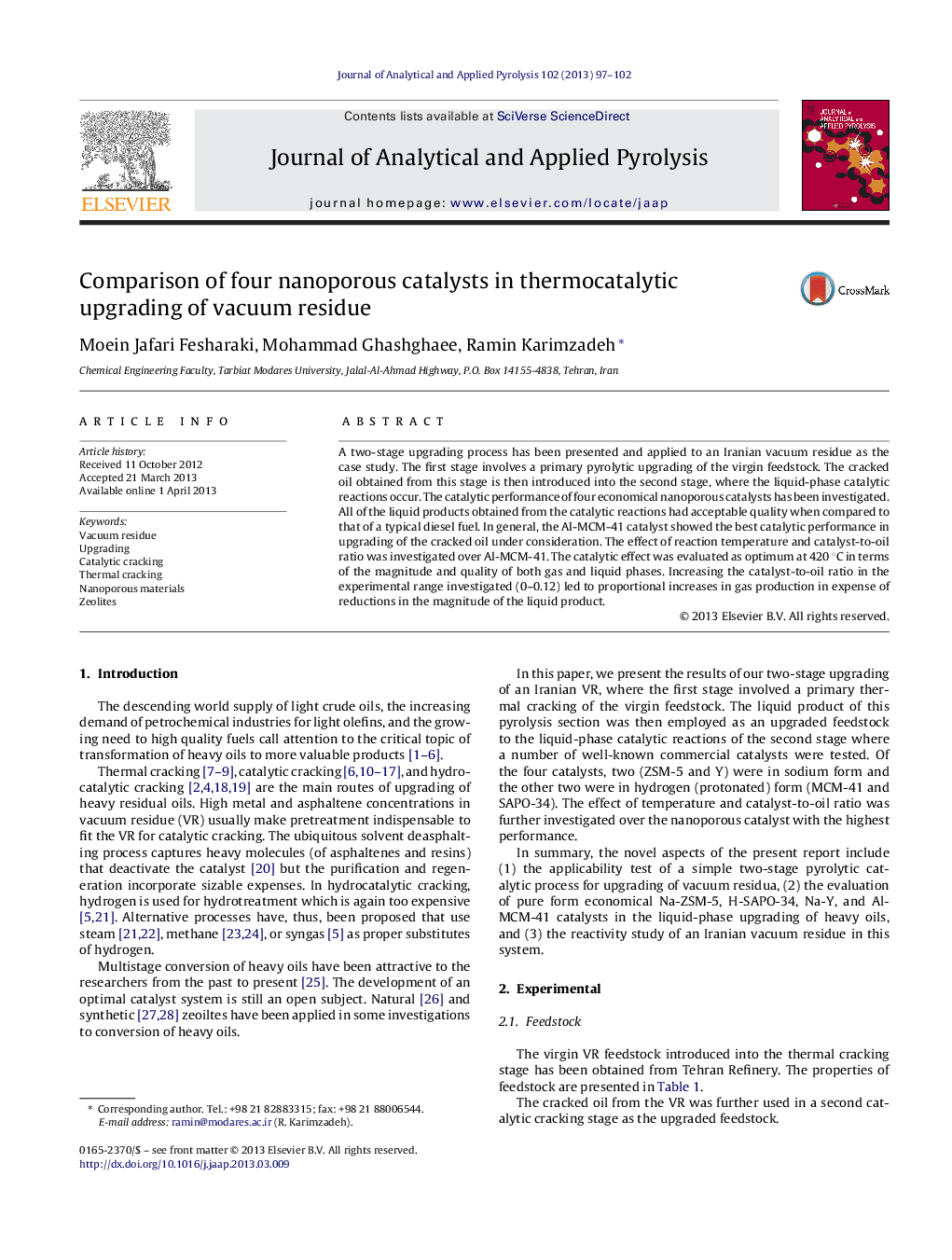| Article ID | Journal | Published Year | Pages | File Type |
|---|---|---|---|---|
| 1196893 | Journal of Analytical and Applied Pyrolysis | 2013 | 6 Pages |
•A two-stage upgrading process for heavy residual oils was investigated.•Gas production increased in the order H-SAPO-34 < Na-Y < Al-MCM-41 < Na-ZSM-5.•The Al-MCM-41 was found to be the best in terms of light olefins production.•The liquid quality was acceptably within the desired range of a diesel fuel.•Olefins yields of up to ~36% were obtained over Al-MCM-41 catalyst.
A two-stage upgrading process has been presented and applied to an Iranian vacuum residue as the case study. The first stage involves a primary pyrolytic upgrading of the virgin feedstock. The cracked oil obtained from this stage is then introduced into the second stage, where the liquid-phase catalytic reactions occur. The catalytic performance of four economical nanoporous catalysts has been investigated. All of the liquid products obtained from the catalytic reactions had acceptable quality when compared to that of a typical diesel fuel. In general, the Al-MCM-41 catalyst showed the best catalytic performance in upgrading of the cracked oil under consideration. The effect of reaction temperature and catalyst-to-oil ratio was investigated over Al-MCM-41. The catalytic effect was evaluated as optimum at 420 °C in terms of the magnitude and quality of both gas and liquid phases. Increasing the catalyst-to-oil ratio in the experimental range investigated (0–0.12) led to proportional increases in gas production in expense of reductions in the magnitude of the liquid product.
